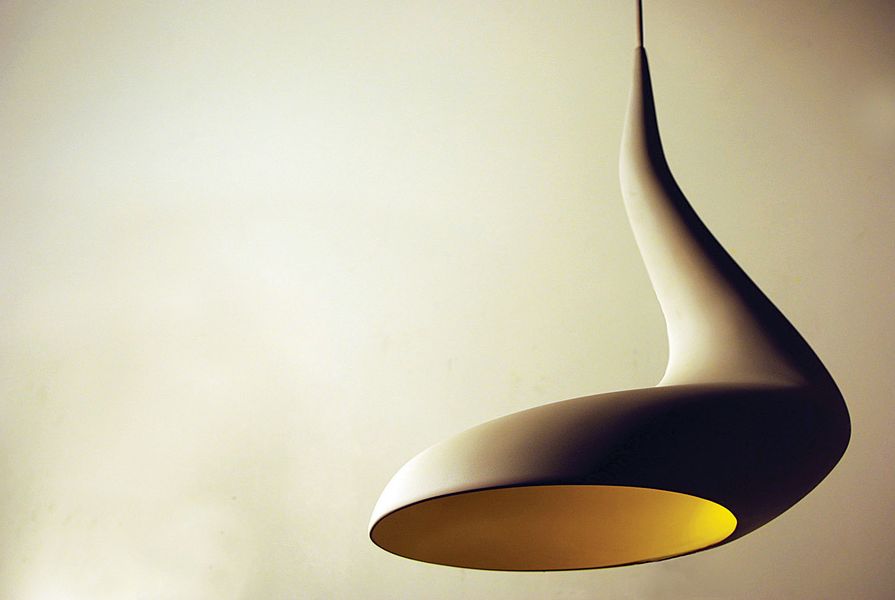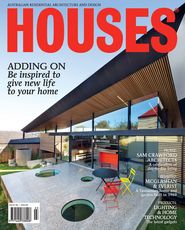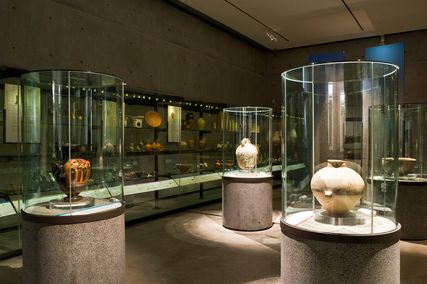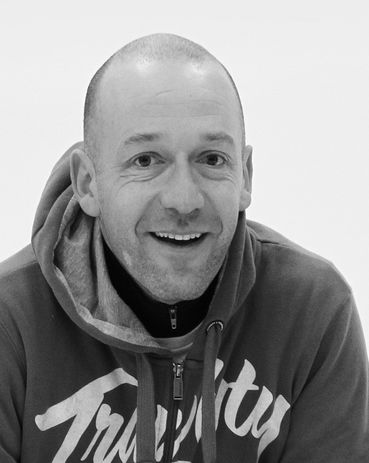
Ash Allen, industrial designer.
I’ve got these ideas in my head … that urge, wanting to make stuff, how do you describe that?” Emerging designer Ash Allen is a practical man with uncompromising vision. To achieve the striking asymmetric form of the Dollop light, he taught himself ceramic slipcasting – a technique he’d never used before. “It’s not so much that I wanted to learn slipcasting,” he reflects. “I wanted to realize the product.” The result is a bold, sinuous form that implies a suspended movement from the ceiling down. Comfortable in the home, it conceals its ultra-bright LEDs beautifully, unlike so many of its contemporaries.
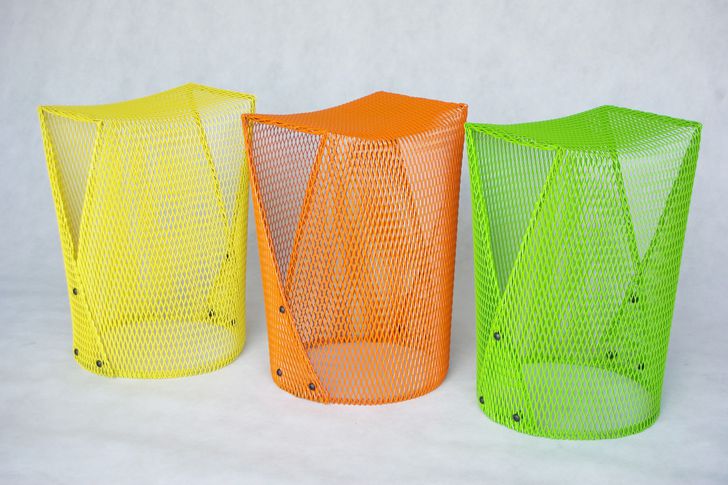
Lionheart stool was initially conceived as a paper form.
This clean, functional resolution is typical of Ash’s sophisticated approach to design. Trained in engineering as well as in furniture design, his expertise is in negotiating the entire product life cycle in his head, before his hands begin to work. From concept to material, to form, to making, to market, Ash’s is a resourceful way of design thinking, which first emerged as he renovated his own home and designed its furniture.
The Stretch desk allows the buyer to put the pieces together without tools or glue.
Ash seeks the most efficient and affordable ways to achieve the form he conceives. Alongside this formal approach, he undertakes investigations through play. Ash initially conceived his Lionheart stool as a paper form, experimenting with folds. “The curvature in the surface creates strength, but it’s also visually dynamic. I started out to make a storage unit, but the curves seemed to suit a stool,” he says.
Despite being seduced by the aesthetic, Ash ultimately returns to the practical. “I love seeing conceptual artists doing amazing, creative artwork, but I think with furniture, you’ve got to have function. It’s got to be visually interesting and it’s got to have a concept behind it. What is the piece showing?”
Market-readiness is key to each of Ash’s pieces; he is careful to balance affordability with quality. Resisting the current trend to design flatpacks, he retains the hand of the maker, leaving the hand of the buyer to enjoy the tactility of his pieces rather than the burden of assembly. “I want things to be strong and sturdy,” he says, “to last a lifetime.” Ash’s Stretch desk allows the buyer to do both: to handle natural FSC plywood and fit the pieces without tools or glue, to reach a satisfying resolution. “In the end, everyone wants to create,” he says. “I think it’s innate.”

